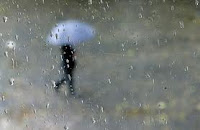Freshwater is a resource like no other. While differences between freshwater and other renewable and non-renewable resources are many, freshwater's supply chain makes freshwater a most unique natural and renewable resource. Nature delivers freshwater in ways it doesn't do for any other resource.
Freshwater's Current 3-Source Supply Chain
3 sources of freshwater exist for most human settlements. These are:
1. Rainwater that naturally falls on the settlement
2. Freshwater transported from near and far locations to the settlement, and
3. Locally obtained water, usually from a combination of sources located at ground level (e.g. rivers and lakes) and below ground (e.g. wells that tap the local water table).
Some locations do not, of course, have all 3 sources available to them - but most do, because this 3-source approach was seen as the most prudent and dependable one.
Threat's to the 3-Source Supply
All three sources can be threatened today in a variety of ways for human settlements in different locations:
1. Climate change has impacted the frequency, amount and location of rainfall.
2. The ability to bring water from remote locations is threatened by both dwindling resources at the remote location and the assertion of communities along the transportation route to the freshwater being transported.
3. Continued extraction of groundwater has lowered water table levels, in some cases to depths that are difficult to access.
Rainfall - Resource delivery on a near-regular schedule
Other than freshwater, nature delivers no other natural resource on a fairly regular schedule to locations where the resource may also be ingeniously available in bulk.
Delivery of freshwater as rain was probably of little value while humans were migrating all over the globe. Rainfall's value only became evident about 10,000 years ago, when humans chose to settle down in one place (and grow the food they needed) instead of moving around in search of food. Humans, in a sense, became dependent on rainfall at the start of the agricultural age.
Rainfall Dependency
Once reliant on rain to grow their food, humans became subject to the impacts of any change in rainfall delivery frequency, amount or location. And it is, in large part, this dependency that is shaping a crisis in freshwater supply - supply of rain is simply too undependable.
The one unique feature that defines freshwater delivery is today the one unique force behind freshwater scarcity and water security.
Freshwater's Current 3-Source Supply Chain
 |
| Source - willoughby.nsw.gov.au |
1. Rainwater that naturally falls on the settlement
2. Freshwater transported from near and far locations to the settlement, and
3. Locally obtained water, usually from a combination of sources located at ground level (e.g. rivers and lakes) and below ground (e.g. wells that tap the local water table).
Some locations do not, of course, have all 3 sources available to them - but most do, because this 3-source approach was seen as the most prudent and dependable one.
Threat's to the 3-Source Supply
All three sources can be threatened today in a variety of ways for human settlements in different locations:
1. Climate change has impacted the frequency, amount and location of rainfall.
2. The ability to bring water from remote locations is threatened by both dwindling resources at the remote location and the assertion of communities along the transportation route to the freshwater being transported.
3. Continued extraction of groundwater has lowered water table levels, in some cases to depths that are difficult to access.
Rainfall - Resource delivery on a near-regular schedule
 |
| Source - diswaterdrams.com |
Delivery of freshwater as rain was probably of little value while humans were migrating all over the globe. Rainfall's value only became evident about 10,000 years ago, when humans chose to settle down in one place (and grow the food they needed) instead of moving around in search of food. Humans, in a sense, became dependent on rainfall at the start of the agricultural age.
Rainfall Dependency
Once reliant on rain to grow their food, humans became subject to the impacts of any change in rainfall delivery frequency, amount or location. And it is, in large part, this dependency that is shaping a crisis in freshwater supply - supply of rain is simply too undependable.
The one unique feature that defines freshwater delivery is today the one unique force behind freshwater scarcity and water security.
No comments:
Post a Comment